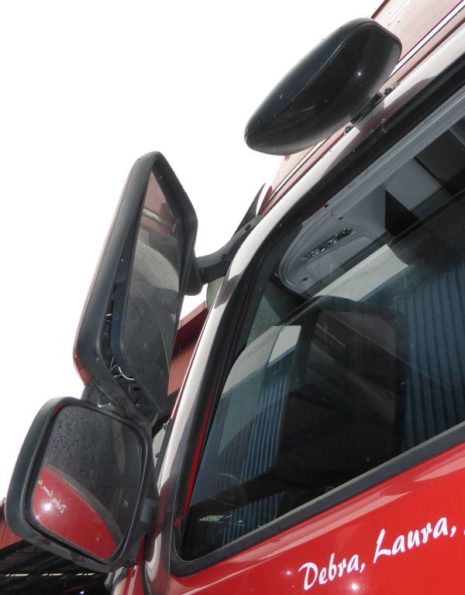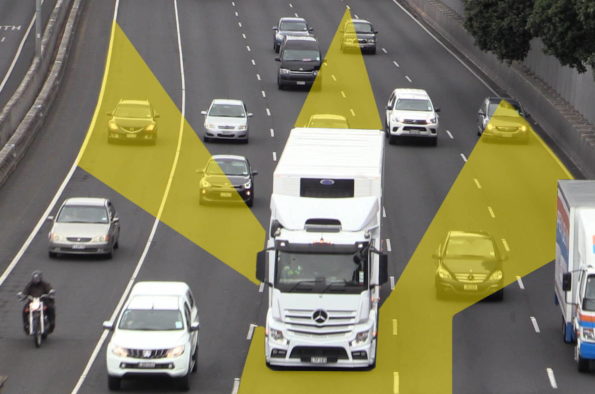Large trucks have a set of inherent disadvantages when it comes to visibility of other vehicles around them, leading to large blind spots. With the exception of forward vision, which is excellent given the driver’s high seating position, all other views are compromised when compared with a car.
This elevated seating position on the right of the cab (if you’re in a country that drives on the left) means that it’s impossible to see anything on the left of the truck without mirrors. All trucks have at least one rear-facing mirror on the left and many have more, including a mirror that faces down so that the driver can see the front-left wheel, and one that sits slightly out the front facing down so that the driver can see the front bumper (only on cab-over trucks, though)

Trucks suffer from restricted manoeuvrability, have longer stopping distances and take up more of the road lane’s width. As trucks have a lower speed limit than light vehicles and cannot accelerate as quickly, other motorists often try to dart into gaps to get past them, creating additional dangerous situations.
So, what are the best rules for driving near large trucks?
Give a truck space
That gap the truck driver is leaving in front of it is for its own braking zone, not for you to dive into, especially not if everyone is already braking coming up to a red traffic light or a roundabout. If you do need to change lanes in front of a truck, give it plenty of warning using your indicator and ensure that you are far enough ahead of the truck so that it can see you.
Don’t drive in the truck’s blind spots
This is a diagram of all the areas a truck driver will struggle to see, even with mirrors:

The black car on the right of the image is driving in the truck’s nearside blind spot. There’s also a car tailgating the truck which will not be visible in the truck’s mirrors. Needless to say, don’t linger in any of the areas marked in yellow. If you have to pass through them, do so purposefully so that you avoid a truck blind spot accident.
Pass quickly
As mentioned above, don’t hang about in the blind spots. If you are going to pass the truck, get it done rather than just crawling past. The indicated speed on your speedometer will be higher than your actual speed. I.e. if your speedo is indicating 100km/h, you’re most likely travelling around 95-97km/h, so registering 103km/h on your speedo will get you past quicker and it’s extremely unlikely you’ll be exceeding 100km/h.
Stay alert and watch for lane position changes
Watch for indications that the truck might be about to perform a manoeuvre. There are multiple indicator lights on the sides and you might start to see lane position changes that show a driver is preparing for a turn. Trucks will take tight corners with a far wider line than a car which is why it’s important that you don’t overtake a turning truck (i.e. a truck turning left could move quite far to the right to make the turn, and by diving into the space on its left, you could find yourself underneath a turning truck’s trailer).
Trucks are gradually adopting technology that improves what a driver can see, such as wing mirror cameras, but with a vehicle the size of a truck, there will always be blind spots, especially for vulnerable road users such as cyclists and motorcyclists.

Leave a Reply
You must be logged in to post a comment.